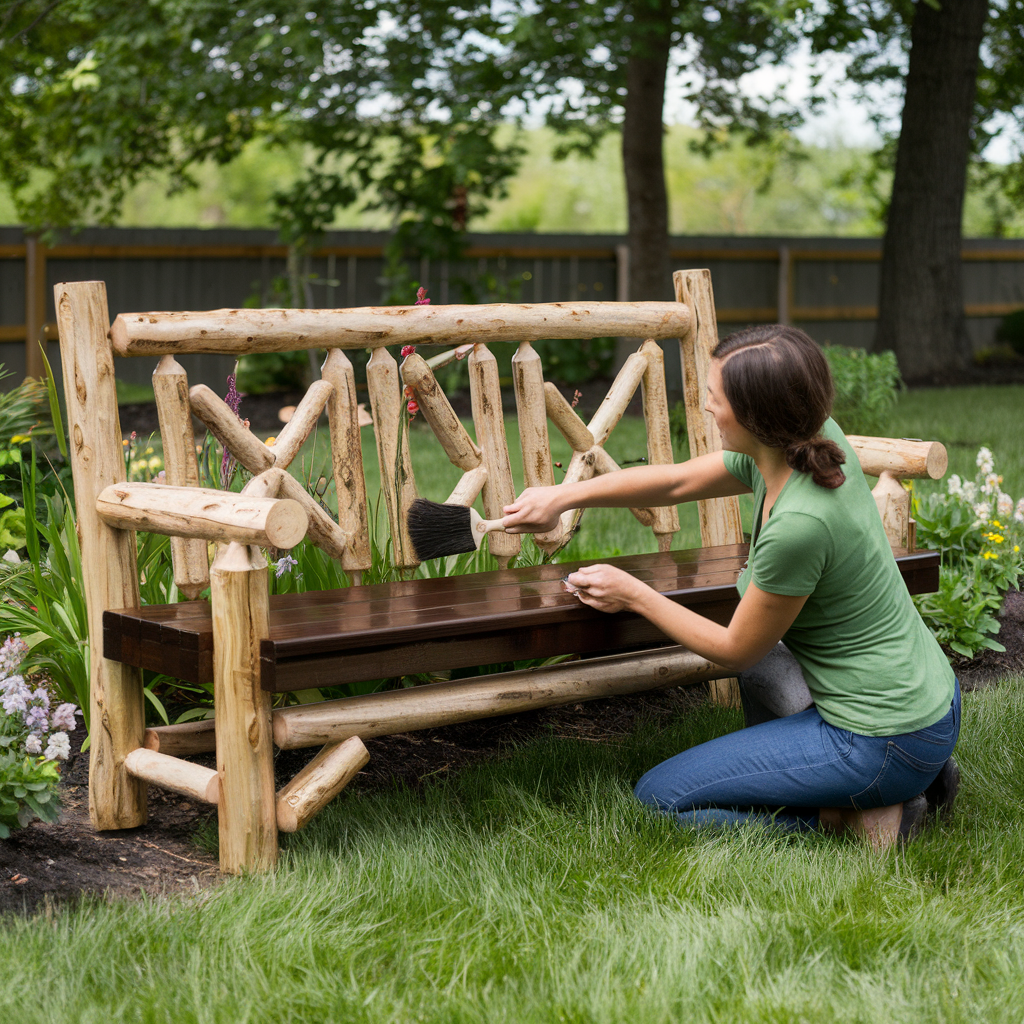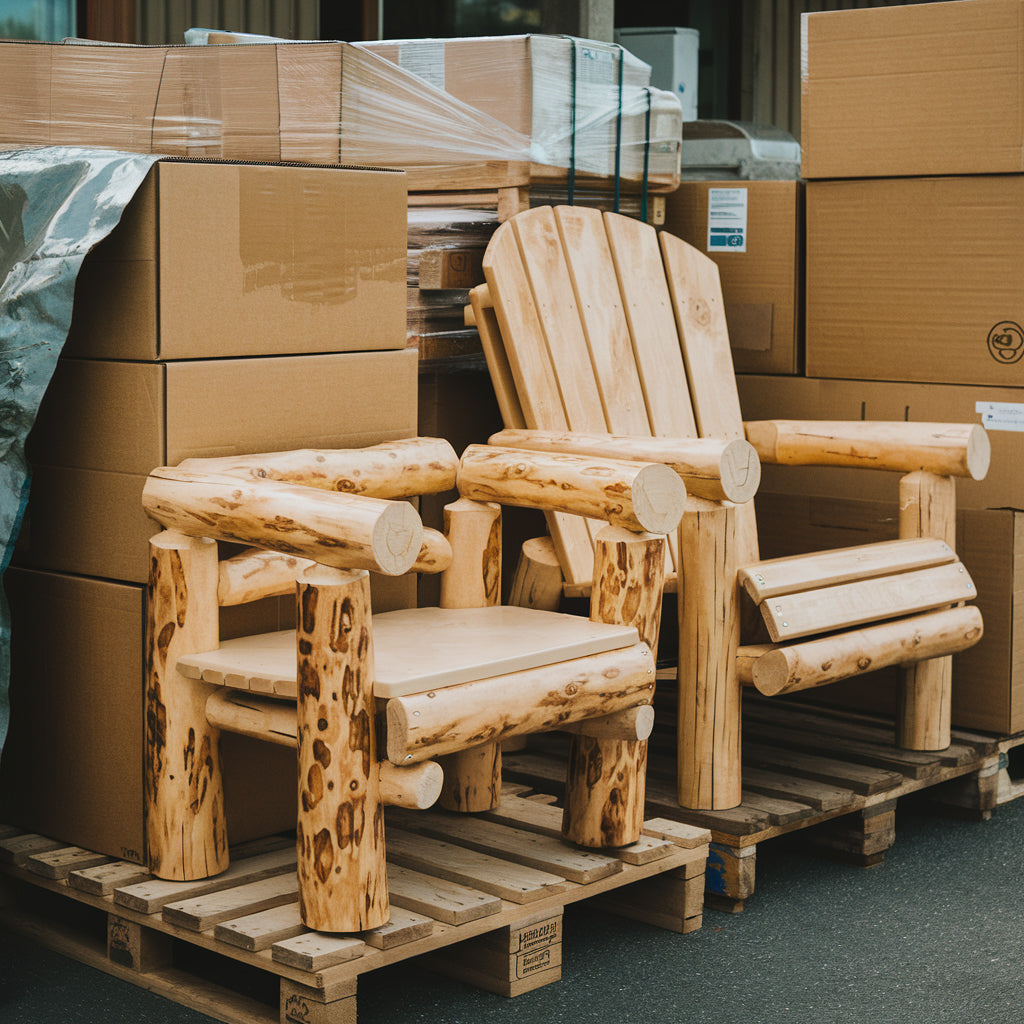Log garden benches bring a rustic charm to any outdoor space, blending seamlessly into natural surroundings with their earthy tones and unique textures. They’re not just about aesthetics, as these benches provide a durable and practical seating option for gardens, patios, and open spaces. Crafted from natural logs, each bench tells its own story through knots and grain patterns. Often, they become the centerpiece of gatherings, offering both solitude for contemplation and a cozy space for social interactions.
Yet, to keep these benches as inviting as they are sturdy, maintenance is key. Like any outdoor furniture, log garden benches face challenges from the elements. Sun, rain, wind, and snow can gradually wear down the wood, leading to issues like warping, cracking, or even pest infiltration. Recognizing common problems early on and understanding how to address them can extend the life of your bench and maintain its charming appearance.
Identifying Common Problems With Log Garden Benches
Log garden benches, while full of character, can encounter various issues over time. Weather conditions play a significant role in this. For instance, long periods of rain can lead to water absorption, which may cause the wood to swell and warp. Sunlight is another major factor, as consistent exposure can dry out the wood, resulting in unsightly cracks and faded colors. Snow and freezing temperatures can also contribute to structural weakness if moisture in the wood freezes and expands.
In addition to weather-related challenges, structural issues like loose joints and wobbly legs are common. These can develop from simple wear and tear due to frequent use or from the natural settling of the log structure. It's important to regularly check the joints and anchors of your bench to ensure everything remains stable and secure.
Another significant concern is the risk of wood rot and insect infestations. Logs are naturally porous, and if they aren't adequately treated, they can become a haven for pests like termites or beetles. Similarly, wood rot can set in when water-soaked logs don’t dry out properly, leading to soft, crumbling wood. Early signs of these issues include discoloration, a spongy texture, and visible insect trails or holes in the wood.
By understanding these common problems and identifying them early, you set the foundation for effective maintenance and repair strategies that will keep your bench in great shape—and a centerpiece of your yard—for years to come.
Preventative Maintenance Tips
Keeping your log garden bench in top shape requires regular care, which starts with consistent cleaning. Rid the bench of dirt, bird droppings, and other debris using mild soap and a soft brush. Rinse well with water and allow the bench to dry completely. This simple routine not only enhances the bench’s look but also prevents dirt buildup, which could otherwise seep into the wood over time.
Using protective treatments keeps your bench resilient against harsh weather. Wood sealants and stains serve as a strong barrier against moisture and the sun's rays. Apply a quality sealant after cleaning to ensure a long-lasting defense. Think of these treatments like sunscreen; just like it protects skin from harmful rays, sealants safeguard the wood from weather damage.
Positioning your bench strategically can also reduce wear and tear. Place it in a spot with shade or cover it when not in use to shield it from the elements, particularly during intense weather conditions. Even the change of seasons demands a bit of rearranging to keep the bench in its optimal location—a place where it can get some sunshine without being scorched, along with adequate protection from rain and snow.
Repairing and Resolving Issues
When problems arise, tackling them quickly can save you time and expense. Loose joints and unstable legs are common issues but are easy to fix. Start by identifying which joints or legs are problematic. Tighten screws and bolts as necessary, or use wood glue for small cracks and splits.
Addressing wood rot requires careful attention. First, remove any sections of rotted wood using a chisel. After ensuring the bench is dried completely, treat the affected area with a wood hardener or similar product. Follow up with a wood filler to restore the surface, sanding it down afterward for a smooth finish.
Insect damage, like termite trails, needs to be managed before it spreads. Begin by moving the bench to a different part of your yard. Apply an appropriate insecticide designed for wood to eliminate pests. Prevention methods are key—regularly treating the bench with products designed to deter insects can stop these tiny invaders before they start.
Benefits of Professional Maintenance Services
While being hands-on with your bench can be rewarding, sometimes professional intervention offers peace of mind. Professionals can perform detailed assessments, identifying conditions that might not be immediately visible. This proactive approach can catch issues while they’re still minor, making them easier to resolve.
Professional services often save you time, handling both routine maintenance and complex repairs efficiently. This allows you to focus on enjoying your garden space without the stress of managing every detail yourself. Professionals have the tools and expertise to extend the life of your log garden bench, giving you assurance in quality and longevity.
Ultimately, a well-cared-for bench not only looks great but also enhances your garden's appeal, providing comfort and charm for years to come.
To maintain the rustic charm and longevity of your log garden benches, consider exploring the wide selection available at Lakeland Mills. Browse our collection of log garden benches to find the perfect match for your outdoor space.




Leave a comment
This site is protected by hCaptcha and the hCaptcha Privacy Policy and Terms of Service apply.